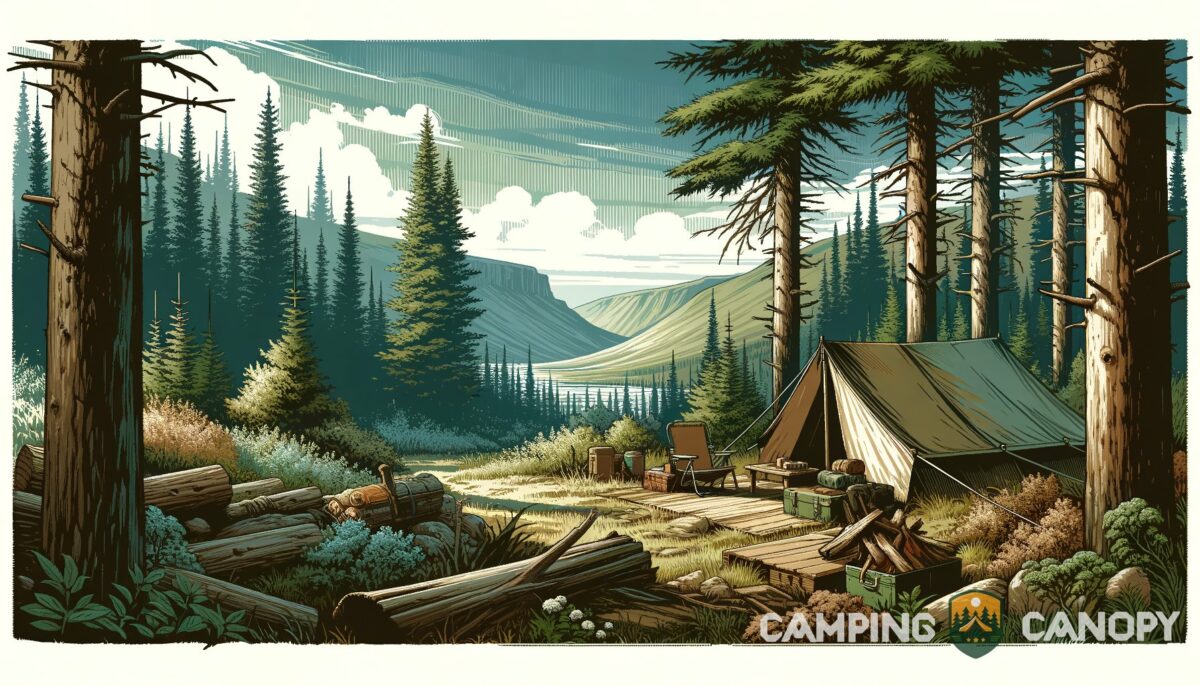Growing up in Boulder, I’ve seen firsthand how human activity can impact nature. This post will equip you with a deep understanding of the Leave No Trace principle and why it’s critical for preserving our natural spaces.
Key takeaways
- Understanding the Principles: It’s critical to familiarize yourself with every aspect of the Leave No Trace principles to ensure you’re minimizing your impact on the outdoors.
- Practical Application: Through conscious planning and adherence to guidelines, these principles can enhance your outdoor experiences, making them more sustainable and enjoyable.
- Community Effort: Leave No Trace is a collective responsibility. Sharing knowledge and partaking in conservation efforts amplify the impact of these practices.
- Continuous Learning: The journey to Leave No Trace is ongoing, with each outdoor adventure offering new opportunities to learn and refine how we interact with nature.
What is the leave-no-trace principle?
The Leave No Trace principle is a set of guidelines designed to minimize our impact on the environment as we engage in outdoor activities, aiming to preserve the natural beauty and integrity of the wilderness for future generations.

Developed through a partnership among the Leave No Trace Center for Outdoor Ethics and federal agencies like the US Forest Service, National Park Service, and Bureau of Land Management, these principles are backed by scientific research and aim to educate campers, hikers, and outdoor enthusiasts on the best practices for interacting with nature.
Tip: Embrace eco-conscious camping
Investing in eco-friendly camping gear and adopting responsible habits can significantly reduce your outdoor impact. Always aim to leave the places you visit better than you found them.
At its core, Leave No Trace revolves around seven key principles:
- Plan ahead and prepare
- Travel and camp on durable surfaces
- Dispose of waste properly
- Leave what you find
- Minimize campfire impacts
- Respect wildlife
- Be considerate of other visitors
Empowering outdoor enthusiasts with these practices ensures that everyone can enjoy the splendor of the outdoors without causing harm.
Here’s a closer look at the seven principles:
- Plan Ahead and Prepare: Understand the regulations and special concerns of the area you’re visiting.
- Travel and Camp on Durable Surfaces: Stick to trails and campsites to prevent damage.
- Dispose of Waste Properly: Pack it in, pack it out. This keeps the environment clean and prevents pollution.
- Leave What You Find: Preserve natural and historical artifacts; avoid introducing non-native species.
- Minimize Campfire Impacts: Use a stove for cooking and enjoy natural light where possible to avoid unnecessary fires.
- Respect Wildlife: Observe animals from a distance and never feed them.
- Be Considerate of Others: Ensure your activities do not negatively impact other visitors’ experiences.
Adhering to these guidelines isn’t just about following rules; it’s about fostering a sustainable relationship with nature that allows us to enjoy the great outdoors while ensuring it remains undamaged and pristine for others. Learn more about minimizing your impact by taking the Leave No Trace 101 course.
How to apply the Leave No Trace principles
Practicing the Leave No Trace principles requires a bit more than just knowing them; it requires adding these principles into every aspect of your outdoor activities. Let’s break down how you can apply these principles effectively to ensure that your adventures are as environmentally friendly as possible.
I vividly remember coming across a hidden meadow that seemed unspoiled by human presence—a rare find that took my breath away. This moment, coupled with an encounter with a mother elk and her calf at dawn, underscored the value of moving through nature with respect and care. It was these experiences that deeply ingrained the importance of the Leave No Trace principles in me.
Chris, Founder of Camping Canopy
Dos and don’ts of Leave No Trace camping
To ensure your camping adventures are both enjoyable and environmentally responsible, here are some key dos and don’ts based on the Leave No Trace principles.
Dos
- Do plan ahead by researching the area you’ll be visiting and prepare accordingly.
- Do stay on designated trails and campsites to minimize soil erosion and habitat destruction.
- Do pack out all your trash, including food scraps and hygiene products, to keep wildlife safe and habitats pristine.
- Do respect wildlife by observing from a distance and not feeding them.
Don’ts
- Don’t venture off established trails or create new ones, as this can damage plant life and contribute to erosion.
- Don’t leave trash or food waste behind, as this can attract wildlife and pollute the environment.
- Don’t take natural objects or cultural artifacts from the area as souvenirs.
- Don’t light fires in areas where they are prohibited or during high fire risk times.
Tip: Master the art of eco-friendly planning
Check weather forecasts, fire restrictions, and trail conditions before you head out. Using apps and websites dedicated to outdoor adventures can help you plan effectively and responsibly.
Planning ahead and preparing
Effective planning is your first step towards a minimal impact outdoor experience. Researching the area you plan to visit, understanding its specific regulations, and preparing for the terrain and weather conditions are crucial steps. By scheduling trips during less busy times, you can avoid contributing to overuse.
Smaller groups have less impact, so consider splitting larger parties into smaller segments.
- Smaller groups have less impact, so consider splitting larger parties into smaller segments.
- Strengthening your connection with nature and ensuring minimal impact on the environment requires a continuous learning process and commitment.
- While the Leave No Trace principles provide a robust framework, personal responsibility in their application is key.
- Every outdoor adventure offers a new opportunity to practice these principles and refine your approach to interacting with the natural world.
- Whether you’re a seasoned backpacker or a casual day hiker, embracing these practices can enhance your outdoor experiences and contribute to the conservation of these treasured landscapes.
Engaging in community-based initiatives and education programs can further amplify the impact of Leave No Trace principles. By sharing knowledge and experiences, we can foster a culture of respect and care for the environment amongst all outdoor enthusiasts.
Frequently asked questions (FAQ)
Yes, you can, but it’s crucial to use established fire rings or mounds and ensure the fire is fully extinguished before leaving. Opt for a lightweight stove or lantern for a lower impact option.
Use a cathole, dug 6 to 8 inches deep and at least 200 feet away from water sources, trail, or camp to dispose of solid human waste. Always pack out toilet paper and hygiene products.
Even small items contribute to the natural landscape and ecosystem. Taking them away can have unintended consequences, so it’s best to leave what you find.
Carry water 200 feet away from streams or lakes, use biodegradable soap sparingly, and scatter the strained dishwater to minimize the impact on the water source.
Absolutely! The principles can and should be applied to all outdoor activities, not just overnight camping trips. It helps keep our natural spaces clean and undisturbed for everyone to enjoy.
If there are no facilities, follow the guidelines for disposing of solid waste with a cathole, and always pack out what you bring in, including toilet paper and hygiene products.
Final thoughts
As we wrap up this exploration into the Leave No Trace principles, remember that each of us holds the power to make a difference. By embracing these principles, we contribute to a larger effort to preserve our natural spaces for generations to come.
Let’s tread lightly on our planet, ensuring that we leave no trace of our visits to the wild. For more tips on making your camping experiences as eco-friendly as possible, consider deep diving into how to minimize your impact with the right gear and practices.
















